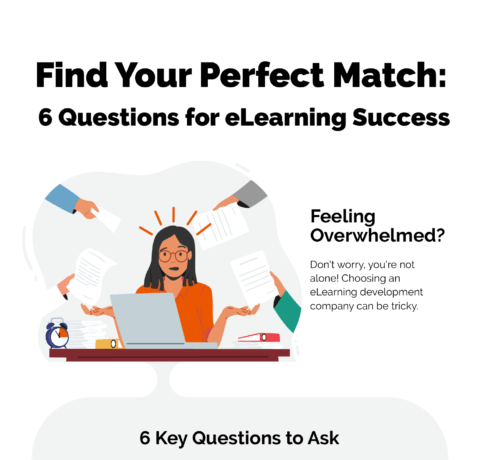Chief Learning Officers Infographic
Chief Learning Officers Infographic presents everything you need to know about Chief Learning Officers by explaining that the CLO title carries with it an expanded skill set, leadership role, and scope of responsibilities in today’s predominant eLearning environment.
What is a Chief Learning Officer (CLO)?
A position best suited to a team player with an eye toward collaboration and someone who fully embraces eLearning in all its formats. The CLO’s primary leadership role is to formulate the strategy to drive corporate learning direction, goals and policies. Together with the Chief Information Officer (CIO) and the Chief Technology Officer (CTO), the CLO disseminates knowledge and information to the learner through technology, social media, and occasionally, through human resources (instructors). And, as always, it’s the person in top C-level leadership position who is responsible for bringing it all in at or under budget.
The first CLO ever (on record) is Steve Kerr, who was hired in 1990 by Jack Welch to oversee GE’s learning and development.
Notable Modern CLOs
- Tom Evans, PwC. 2014 CLO of the year. In charge of development for 39,000 employees.
- Amy Hayes, Facebook. Global head of Learning & Development for 9500 employees.
- Tamar Elkeles, Qualcomm. 2010 CLO of the year. In charge of learning for 23,000 employees.
CLO Gender Breakdown
Women Represent 45% of CLOs are female and 55% male.
CLO Average Salary
- San Francisco, CA $140,000
- Greater NYC Area $139,000
- Los Angeles, CA $133,000
- Boston, MA $125,000
- Washington, DC $123,000
- Houston, TX $122,000
- Seattle, WA $121,000
- Dallas, TX $120,000
- Chicago, IL $116,000
- Atlanta, GA $110,000
Where Do CLO’s Work?
- Greater NYC Area 10.00%
- San Francisco Bay Area 5.50%
- Greater Chicago Area 5.00%
- Greater Atlanta Area 4.00%
- Greater Boston Area 4.00%
- Dallas/Fort Worth Area 3.50%
- Greater Philadelphia 3%
- Greater Los Angeles 2.50%
- Greater Denver Area 2.50%
- Baltimore Area 2%
- Greater Seattle Area 1.50%
- Greater Minneapolis 1.50%
- Raleigh-Durham 1.50%
- Phoenix Area 1.50%
- Greater St. Louis Area 1.50%
- Greater Detroit Area 1%
- Orlando Area 1%
- Greater San Diego Area 1%
- Tampa/St. Petersburg 1%
- Cleveland/Akron 1%
- Charlotte Area 0.50%
- Greater Austin Area 0.50%
- Richmond Area 0.50%
- Sacramento 0.50%
- Cincinnati 0.50%
- Portland 0.50%
- Indianapolis 0.50%
- Jacksonville 0.50%
- Orange County 0.50%
- Greater Milwaukee Area 0.50%
What Industries Do CLOs Work In?
- Education Management 12%
- Professional Training 11.50%
- Human Resources 10%
- Management Consulting 9.50%
- Hospital/Healthcare/Pharma 8.50%
- eLearning Industry 6.50%
- Government Administration 5.50%
- Higher Education 4%
- Financial Services & Banking 3.50%
- Non-Profit Sector 3%
- Information Technology 2.50%
- Defense & Space 1%
- Other 22%
How Many Years of Professional Experience Do CLOs Have?
It’s no surprise here that over 90% of CLOs have a minimum of 10 years of corporate experience. In fact, we would have expected that number to be higher than 92%, since this a position which draws on a lot of corporate experience. Regardless, the average total of experience was approximately 18 years, which is more in line with what we expected.
Fortune 50 Companies and CLOs
It seems clear that nearly every Fortune 50 company has a chief learning officer – even if that’s not the current title being used. The question is, what are their job titles, exactly? Many CLO’s exist in the form of a training director, head of L&D, or even a CEO. But more and more, the official job title of chief learning officer is becoming mainstream.
Some of the Fortune 50 companies that employ official CLOs are: Citigroup, Bank of America, HP, Goldman Sachs, JP Morgan, GE, Hess, and Caterpillar. When we expand the list to Fortune 500, there are a few more notable companies, among others: Cisco, New York Life Insurance, American Express, CHS, Nike, AIG, McDonalds, Merck, General Mills, and Master Card.
Relevant Industry Statistics
In 2014 alone, $70 billion was spent on corporate training. And in 2015, eLearning is expected to reach $107 billion, representing a +9.5% growth since the previous year. In regard to general learning and development, over $160 billion is spent per year, and increasing each year.
What Does a CLO Do?
A chief learning officer’s job is comprised of 2 spectrums: overall job responsibilities as well as day-to-day tasks.
Responsibilities:
- Develops an organization’s educational process
- Promotes knowledge management
- Institutes effective training strategies
- Directs large scale change management (if applicable)
- Oversees and institutes latest technology
- Promotes importance of learning & ROI to shareholders
Day to Day Job Tasks:
- Reviews all training modules
- Ensures that learning sessions are engaging & memorable
- Communicate daily with managers on employee progress
- Communicate daily with C-suite to maintain symmetry
- Review macro-level HR processes
- Assists with learning & development for in-house processes
Core Learning Principles Used by CLO’s
- Instructional Design
- Mobile learning
- Micro learning
- Social learning
- Blended learning
- Gamification
- Learning Management Systems
Read also:







You can adjust your cookie preferences here.